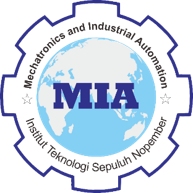The Effect of Cabbage Waste Pretreatment on Lignocellulose Content for Bioethanol Production
Abstract
Keywords
Full Text:
PDFReferences
Y. Sudiyani, S. Aiman, and D. Mansur, Perkembangan Bioetanol G2: Teknologi dan Perspektif. 2019.
A. Bušić, N. Marđetko, S. Kundas, G. Morzak, H. Belskaya, M. I. Šantek, D. Komes, S. Novak, and B. Šantek, “Bioethanol Production from Renewable Raw Materials and Its Separation and Purification: A Review,” Food Technology and Biotechnology, Vol. 56, No. 3. Pp. 289–311, 2018.
S. H. Mood, A. H. Golfeshan, M.Tabatabaei, G. S. Jouzani, G. H. Najafi, M. Gholami, and M. Ardjmand, “Lignocellulosic Biomass to Bioethanol, A Comprehensive Review With a Focus on Pretreatment,” Renewable and Sustainable Energy Reviews, Vol. 27. Pp. 77–93, 2013.
T. G. Genemo, D. L. Erebo, and A. K. Gabre, “Optimizing Bio-Ethanol Production from Cabbage and Onion Peels Waste Using Yeast (Saccharomyces Cerevisiae) As Fermenting Agent,” Int. J. Life Sci. Res. Arch., Vol. 1, No. 1, Pp. 24–35, 2021.
Y. Sudiyani, S. Aiman, and D. Mansur, “Perkembangan Bioetanol G2: Teknologi dan Perspektif,” E-Publishing Brin, 2019.
C. G. Yoo, X. Meng, Y. Pu, and A. J. Ragauskas, “The Critical Role of Lignin in Lignocellulosic Biomass Conversion and Recent Pretreatment Strategies: A Comprehensive Review,” Bioresource Technology, Vol. 301. P. 122784, 2020.
N. Mosier, C. Wyman, B. Dale, R. Elander, Y.Y. Lee, M. Holtzapple, and M. Ladisch, “Features of Promising Technologies for Pretreatment of Lignocellulosic Biomass,” Bioresour. Technol., Vol. 96, No. 6, Pp. 673–686, 2005.
K. Weerasai, N. Suriyachai, A. Poonsrisawat, J. Arnthong, P. Unrean, N. Laosiripojana, and V. Champreda, “Sequential Acid and Alkaline Pretreatment of Rice Straw for Bioethanol Fermentation,” Bioresources, Vol. 9, No. 4, Pp. 5988–6001, 2014.
M. R. Hidayat, “Teknologi Pretreatment Bahan Lignoselulosa Dalam Proses Produksi Bioetanol,” Biopropal Ind., Vol. 4, No. 1, 2013.
N. Novia, Khairunnas, and G. T. Purbojoyi, “Pengaruh Konsentrasi Natrium Hidroksida Saat Pretreatment dan Waktu Fermentasi Terhadap Kadar Bioetanol Dari Daun Nanas,” J. Tek. Kim., Vol. 21, No. 3, Pp. 14–24, 2015.
S. H. Anita, W. Mangunwardoyo, and Y. Yopi, “Sugarcane Bagasse As A Carrier For The Immobilization of Saccharomyces Cerevisiaein Bioethanol Production,” Makara J. Technol., Vol. 20, No. 2, Pp. 73–81, 2016.
L. M. dan H. Y. Elwin, “Analisis Pengaruh Waktu Pretreatment Dan Konsentrasi NaOH Terhadap Kandungan Selulosa, Lignin, dan Hemiselulosa Eceng Gondok Pada Proses Pretreatment Pembuatan Bioetanol,” J. Keteknikan Pertan. Trop. Dan Biosist., Vol. 2, No. 2, Pp. 110–116, 2014.
D. M. Maharani and K. Rosyidin, “Efek Pretreatment Microwave-NaOH Pada Tepung Gedebog Pisang Kepok Terhadap Yield Selulosa,” Agritech, Vol. 38, No. 2, Pp. 133–139, 2018.
N. M. Rilek, N. Hidayat, and Y. Sugiarto, “Hidrolisis Lignoselulosa Hasil Pretreatment Pelepah Sawit (Elaeis Guineensis Jacq) Menggunakan H2SO4 Pada Produksi Bioetanol,” Ind. J. Teknol. Dan Manaj. Agroindustri, Vol. 6, No. 2, Pp. 76–82, 2017.
A. S. Rusdianto, W. Amilia, and V. J. D. Sinta, “The Optimization of Cellulose Content in Tobacco Stems (Nicotiana Tabaccum L.) With Acid Extraction Method and Alkaline Extraction Method,” Int. J. Food, Agric. Nat. Resour., Vol. 2, No. 2, Pp. 13–19, 2021.
M. Kaczmarek, “Estimation of Reducing Sugar By Nelson-Somogyi Method,” Pp. 4–5, 2014.
N. Kanani, R. Rahmayetty, and E. Y. Wardhono, “Pengaruh Penambahan FeCl3 dan Al2O3 Terhadap Kadar Lignin Pada Delignifikasi Tongkol Jagung Dengan Pelarut NaOH Menggunakan Bantuan Gelombang Ultrasonik,” Pros. Semnastek, Pp. 1–9, 2018.
A. G. Demesa, A. Laari, and M. Sillanpää, “Value-Added Chemicals and Materials from Lignocellulosic Biomass: Carboxylic Acids and Cellulose Nanocrystals. Carboxylic Acids and Cellulose Nanocrystals.,” In Advanced Water Treatment: Advanced Oxidation Processes, 2020, Pp. 367–436.
Q. Ye And T. Yokoyama, “Revisiting The Mechanism Of Β-O-4 Bond Cleavage During Acidolysis of Lignin Vii: Acidolyses of Non-Phenolic C6-C2-Type Model Compounds Using HBr, HCl, and H2SO4, and a Proposal on The Characteristic Action of Br− And Cl−,” J. Wood Sci., Vol. 66, No. 80, Pp. 1–12, 2020.
S. Safaria, N. Idiawati, and T. A. Zaharah, “Efektivitas Campuran Enzim Selulase Dari Aspergillus Niger dan Trichoderma Reesei Dalam Menghidrolisis Substrat Sabut Kelapa,” J. Kim. Khatulistiwa, Vol. 2, No. 1, Pp. 46–51, 2013.
M. D. Lestari, Sudarmin, and Harjono, “Ekstraksi Selulosa Dari Limbah Pengolahan Agar Menggunakan Larutan NaOH Sebagai Prekursor Bioetanol,” Indones. J. Chem. Sci., Vol. 7, No. 3, Pp. 236–241, 2018.
A. Berlin and M. Balakshin, “Industrial Lignins: Analysis, Properties, and Applications,” In Bioenergy Research: Advances and Applications, 2014.
N. Maftucha, R. Amelia, and V. Syafriana, “Efisiensi Pretreatment Dalam Pengolahan Bambu Menjadi Bioetanol,” Lomba Karya Tulis Ilm., Vol. 3, No. 1, Pp. 87–102, 2022.
H. V. Lee, S. B. A. Hamid, and S. K. Zain, “Conversion of Lignocellulosic Biomass to Nanocellulose: Structure and Chemical Process,” Sci. World J., Vol. 2014, No. 631013, 2014.
R. Moeksin, L. Comeriorensi, and R. Damayanti, “Pembuatan Bioetanol Dari Eceng Gondok (Eichhornia Crassipes) Dengan Perlakuan Fermentasi,” J. Tek. Kim., Vol. 22, No. 1, Pp. 9–17, 2016.
S. Almatsier., Prinsip Dasar Ilmu Gizi Edisi Ke-9. Jakarta, 2015.
M. J. Taherzadeh and K. Karimi, “Acid-Based Hydrolysis Processes for Ethanol from Lignocellulosic Materials: A Review,” Bioresources, Vol. 2, No. 3. Pp. 472–499, 2007.
M. Samsuri, M. Gozan, R. Mardias, M. Baiquni, H. Hermansyah, A. Wijanarko, B. Prasetya, dan M. Nasikin, “Pemanfaatan Sellulosa Bagas Untuk Produksi Ethanol Melalui Sakarifikasi dan Fermentasi Serentak Dengan Enzim Xylanase,” Makara Technol. Ser., Vol. 11, No. 1, Pp. 17–24, 2010.
E. Kurniawan, R. Dewi, and R. Jannah, “Pemanfaatan LCPKS Sebagai POC Dengan Penambahan Serat TKKS,” Teknol. Kim. Unimal, Vol. 11, No. 1, Pp. 76–90, 2022.
P. Mardina, H. A. Prathama, and D. M. Hayati, “Pengaruh Waktu Hidrolisis dan Konsentrasi Katalisator Asam Sulfat Terhadap Sintesis Furfural Dari Jerami Padi,” Konversi, Vol. 3, No. 2, P. 1, 2016.
J. M. Cruz, J. M. Dominguez, H. Dominguez, and J. C. Parajo, “Preparation of Fermentation Media from Agricultural Wastes and Their Bioconversion Into Xylitol,” Food Biotechnol., Vol. 14, No. 1–2, Pp. 79–97, 2000.
S. I. Mussatto and I. C. Roberto, “Alternatives for Detoxification of Diluted-Acid Lignocellulosic Hydrolyzates for Use in Fermentative Processes: A Review,” Bioresource Technology, Vol. 93, No. 1. Pp. 1–10, 2004.
B. T. Kurniawan, S. H. Bintari, and Susanti, “Efek Interaksi Ragi Tape dan Ragi Roti Terhadap Kadar Bioetanolketela Pohon (Manihot Utilissima, Pohl) Varietas Mukibat,” Biosaintifika, Vol. 6, No. 2, 2014.
D. P. Morgavi, E. Forano, C. Martin, and C. J. Newbold, “Microbial Ecosystem And Methanogenesis in Ruminants,” Animal, Vol. 4, No. 7, Pp. 1024–1036, 2010.
A. Kusumaningrum, I. B. Wayan Gunam, and I. M. Mahaputra Wijaya, “Optimasi Suhu dan pH Terhadap Aktivitas Enzim Endoglukanase Menggunakan Response Surface Methodology (RSM),” J. Rekayasa dan Manaj. Agroindustri, Vol. 7, No. 2, Pp. 243–253, 2019.
T. Kunz, E. J. Lee, V. Schiwek, T. Seewald, and F. J. Methner, “Glucose - a Reducing Sugar? Reducing Properties of Sugars in Beverages and Food,” Brewingscience, Vol. 64, No. 7–8, Pp. 61–67, 2011.
A. Hernández-López, D. A. Sanchez Felix, Z. Z. Sierra, I. G. Bravo, T. D. Dinkova, And A. X. Avila-Alejandre, “Quantification of Reducing Sugars Based on The Qualitative Technique of Benedict,” Acs Omega, Vol. 5, No. 50, P. 32403−32410, 2020.
M. Apriyanto, S. Sutardi, S. Supriyanto, and E. Harmayani, “Fermentasi Biji Kakao Kering Menggunakan Saccharomyces Cerevisiae, Lactobacillus Lactis, dan Acetobacter Aceti,” Agritech, Vol. 37, No. 3, Pp. 302–311, 2018.
N. Azizah, A. Al-Baari, and S. Mulyani, “Pengaruh Lama Fermentasi Terhadap Kadar Alkohol, pH, dan Produksi Gas Pada Proses Fermentasi Bioetanol Dari Whey Dengan Substitusi Kulit Nanas,” J. Apl. Teknol. Pangan, Vol. 1, No. 2, Pp. 72–77, 2012.
D. Seftian, F. Antonius, and M. Faizal, “Pembuatan Etanol Dari Kulit Pisang Menggunakan Metode Hidrolisis Enzimatik dan Fermentasi,” J. Tek. Kim., Vol. 18, No. 1, Pp. 1–3, 2012.
A. Anu, Kumar, K. K. Jain, and B. Singh, “Process Optimization for Chemical Pretreatment of Rice Straw for Bioethanol Production,” Renew. Energy, Vol. 156, Pp. 1233–1243, 2020.
Y. Fauziyah, S. Sunarti, I. F. Hanoum, and M. S. H. Wahyuningsih, “Ethanol Extract of Tithonia Diversifolia (Hemsley) a Gray Standardized Ameliorates Hyperglycemia, Polyphagia, and Weight Loss in Diabetic Rats,” Molekul, Vol. 13, No. 1, Pp. 72–79, 2018.
B. Y. Jeon, S. J. Kim, D. H. Kim, B. K. Na, D. H. Park, H. T. Tran, R. Zhang, and D. H. Ahn, “Development of a Serial Bioreactor System for Direct Ethanol Production From Starch Using Aspergillus Niger and Saccharomyces Cerevisiae,” Biotechnol. Bioprocess Eng., Vol. 12, No. 5, Pp. 566–573, 2007.
M. E. Kustyawati, Saccharomyces Cerevisiae: Metabolit dan Agensia Modifikasi Pangan. Yogyakarta, 2018.
DOI: http://dx.doi.org/10.12962%2Fj23378557.v10i2.a19270
Refbacks
- There are currently no refbacks.
This work is licensed under a Creative Commons Attribution 4.0 International License. IPTEK The Journal of Engineering published by Pusat Publikasi Ilmiah, Institut Teknologi Sepuluh Nopember.
Please contact us for order or further information at: email: iptek.joe[at]gmail.com Fax/Telp: 031 5992945. Editorial Office Address: Pusat Riset Building 6th floor, ITS Campus, Sukolilo, Surabaya 60111, Indonesia.








